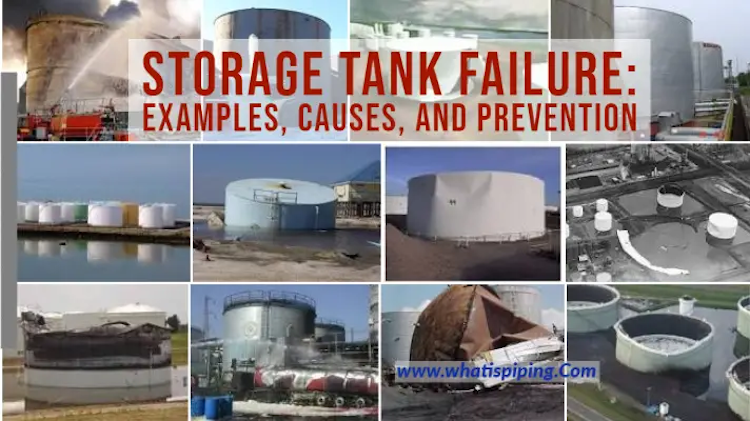Storage tank failure has long bedeviled the oil and gas industry. But there the liquids are not stored at such high temperatures as for concentrated solar thermal energy storage, with its daily heating and cooling cycles
One of the failure mechanisms in the steel used in CST and CSP plants’ thermal energy storage tanks has been isolated and a steel formulation from the Finnish stainless steel firm Outokumpo has now successfully passed testing by the Colorado School of Mines
Today’s commercial CSP technology depends on thermal energy storage of an extremely high-temperature liquid in a huge outdoor tank. These tanks can hold thousands of tons of molten salts, an extremely hot liquid at high pressure that cycles between 300°C and 600°C every morning and evening as it heats and cools daily.
The industry standard metal for these tanks has been a type of austenitic stainless steel, 347H. However, some high-profile storage tank failures have now been partly attributed to this steel choice.
How the steel and the weld behaves under thermal cycles as they go through the welding process is where it fails. The welding process alters the metallurgy. Under a certain stress and temperature, some alloying components migrate to the grain boundaries, causing brittle material and cracking at the boundaries. The phenomenon is known as Stress Relaxation cracking.
“Diagnosing stress relaxation cracking in real project storage tank failures is quite hard,” said Kurt Drewes, the CTO at the Australian solar firm Vast Energy.
While performing failure tests in the huge tanks containing molten salts is impossible, the Colorado School of Mines has run tests on this 347H steel itself in the lab to understand the causes. They showed that the welds fail due to stress relaxation cracking (SRC) in the steel.
Post-weld heat treatment (PWHT) can alleviate some of this tendency but this is almost impossible to achieve at the scale of the typical storage tank the industry is constructing.
An alternative stainless steel formulation; Therma 4910
When all of an industry experience has been built around a single material, it’s very hard to go back and say a more resilient alternative must be found. But now Vast, Outokumpu and the Colorado School of Mines have found and demonstrated an alternative. A more resilient steel for the tanks.

An older formula from the Finnish high temperature stainless steel firm Outokumpu, has now proved successful in preventing thermal storage tank failure at the welding joints
“The logical answer is to try and find a material that you don’t need to have PWHT to achieve structural integrity. And that’s what testing of this new steel formulation has shown; that this is possible,” said Drewes.
Led by the Colorado School of Mines, Vast has now tested Therma 4910, known as 316 LNB, an alternative steel formulation supplied by one of the world’s major stainless steel fabricators, the Finnish firm Outokumpo.
“Of course, some other steels also don’t tend to have stress relaxation cracking, but they have much lower creep and fatigue strength. 316LNB has similar or better creep fatigue properties than 347H, and no propensity to stress relaxation cracking,” added Bruce Leslie, who heads up product development at Vast.
This alternative steel formulation is slightly more expensive than the traditional one. Still, Vast is sounding the alarm that the reliability reputation cost to the whole industry of thermal storage tank failure is much greater. This is why they feel an urgency to let industry know of the new option in material choice.
1980s dirty industry boost for a 21st century clean one
“This formulation is actually not a new material that’s just been come up with,” Leslie noted.
“It was developed in the ‘80s and ‘90s for coal-fired power plants. There had been a massive push to go to very high temperatures and pressures in coal-fired plants. So 316LNB was used quite a lot, but then the industry developed cheaper non-stainless steels that worked for their needs. But there’s a huge amount of test data and information about it. So it’s a material with a track record.”
Switching to this “new-old” storage tank material has become even more urgent today, given that a new solar sector generating the heat for industrial processes and solar fuels is just taking off: While CSP might only be asked to generate solar power at up to 600°C, these new processes must guarantee steady heat production around the clock and at even higher temperatures of up to 1,500°C.
Now tested at the Colorado School of Mines
The Colorado School of Mines has now performed the same tests that they did on the old steel formula, on the new 316LNB steel.
“We knew of the previous tests, and we thought it’s appropriate to rerun those same tests on the new material,” said Drewes.
“It’s a structural test related to the structural failure of the materials and what happens at the welding. We simulate the welding effect on the materials in those tests. What they show is that 316LNB has solved those issues. It has a low level of carbon and increased nitrogen and boron, which give it those properties. And we advocate that this is the preferred material for the CSP industry going forward.”
The testing has shown that this formulation is resilient against this failure mechanism. They will present their findings at the SolarPACES Conference later this year in Rome. Vast and Outokumpo funded the testing in partnership with Vast along their construction partner, CyD.
Drewes noted that Vast has an interest in having reliable thermal storage tanks, and that Outokumpo, who proposed the specific materials for this application, are keen to promote the use of high-temperature steel capabilities. He said they can meet these demanding specs and they believe in the future of thermal energy storage as a necessary component of the New Energy Transition.
Vast has focused in previous work on strengthening the floor of these huge tanks to prevent buckling, which is just one aspect of improving thermal storage tank resilience. The firm is working with the DOE on other tank improvements for their projects, but Drewes and Leslie see this solution as crucial information for the industry as a whole.
Vast Solar’s fix for tank leaks that stymied the first Tower CSP
Vast Solar Consortium Patents Flexitank; Prevents Thermal Storage Leaks
The post A new (older) steel helps solve thermal energy storage tank failure appeared first on SolarPACES.


